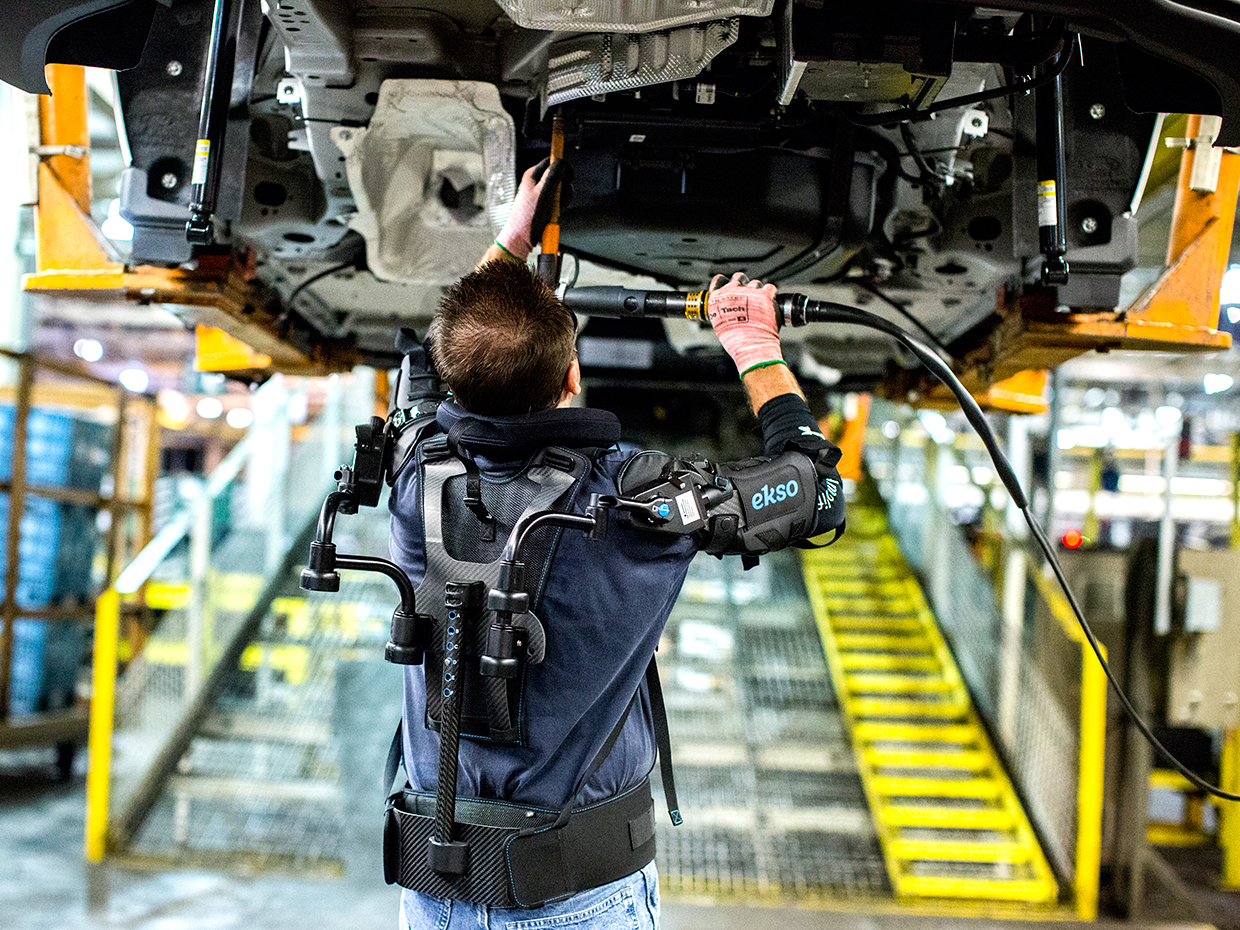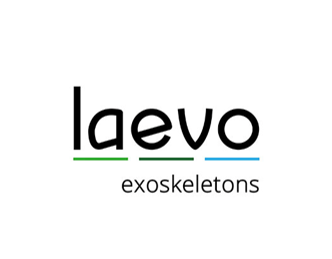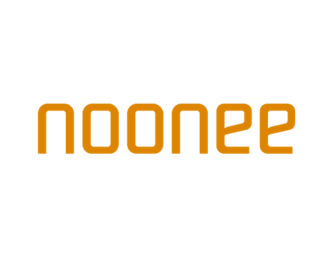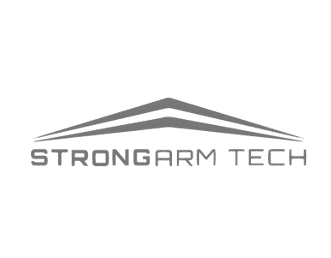123Fab #48
1 topic, 2 key figures, 3 startups to draw inspiration from

While many of the early exoskeletons were focused on military and medical applications, in recent years there has been an increase of new use cases due to decreasing costs. Exoskeletons are being used in a range of industries from manufacturing and construction to agriculture. BMW, Honda and Hyundai use them in the automotive industry; Samsung, Panasonic, Mitsubishi and Siemens in electronics; and Geodis, Pon and AT in logistics and shipping.
According to ASTM International, exoskeletons can be defined as wearable devices that work in tandem with the user. They are different from autonomous robots in that they don’t work in place of the blue-collar worker. They are placed on their body and act as amplifiers that augment, reinforce or restore human performance, as opposed to mechanical prosthetics, such as a robotic arm or leg, that replace original body parts.
The global exoskeleton market can be segmented on the basis of two main criteria. On the basis of extremity, the market can be divided into lower extremity, upper extremity and full-body. In terms of product, the market can be classified into two categories:
- Powered exoskeletons — they use batteries or electric cable connections to run sensors and actuators
- Passive exoskeletons — they do not have any electrical power source and can be used for weight distribution, energy capture, locking, etc.
In recent years, exoskeletons have emerged in industries that are less amenable to automation. For example, industries such as construction or oil and gas, which operate in unstructured environments, or manufacturing industries that produce a wide variety of parts of different shapes and sizes. In these industries, blue-collar workers handle the most complicated tasks, resulting in wear-and-tear experiences. While some repetitive tasks have been handed over to autonomous robots, exoskeletons fill the automation gap for non-repetitive and hazardous tasks by allowing workers to perform strenuous tasks safely and efficiently. The EksoZeoG developed by Ekso Bionics, for example, helps construction workers use heavy hand tools by bearing the weight of the heavy equipment.
Advances in enabling technologies (actuators, batteries, advanced materials, etc.) have reduced the costs and increased the functionality of exoskeletons in recent years, but they still represent a significant investment. While the price varies between passive and active exoskeletons, full-body, lower and upper, the average exoskeleton costs several thousand dollars. Given the significant cost, a handful of startups have sought to lower the barrier to adoption via more innovative business models. The concept of Robotics-as-a-Service (RaaS) is gaining ground. Sarcos, which is one of its proponents, allow customers to shift their CAPEX to OPEX, and thus deploy solutions without upfront costs. Based on its research, Sarcos’ customers perceive other benefits to RaaS, such as the elimination of technology risk and the absence of maintenance costs. Other startups are looking to democratize the use of exoskeletons, especially passive ones that are less expensive. With the help of crowdfunding, French startup HMT wants to use a low-cost model to sell its products at €200.
While the market is still looking for an accurate combination of hardware, the competition to make the best, powered exoskeleton is slowly shifting from a race for the best hardware to a race for the best software. In this sense, the industry can be compared to the semiconductor industry in the late 2000s with wafer handlers. The robots all managed to move a wafer from A to B, regardless of the hardware, but it turned out that it was the software that made the difference. The winners were the ones with the best software and the most reliable architecture with less downtime. Today, exoskeleton research is moving in this direction and increasingly focusing on complex software. It seeks to develop more intelligent exoskeletons, via features such as balance control or energy transfer optimization. The BioMot project, based at the Human Locomotion Laboratory in Madrid, is a weak signal of this shift. They are trying to develop more wearable equipment, that is lightweight and compact, and which is especially better able to anticipate and detect the intended movements of the worker. Through dynamic sensorimotor interactions, the exoskeletons have real-time adaptability and flexibility, increasing the symbiosis between the wearable and the user. Such projects pave the way to a new generation of lighter and smarter exoskeletons.
In short, the future of industrial exoskeletons looks bright. Barriers to adoption are expected to further decrease as costs drop and lightweight exoskeletons are increasingly developed. Regulation should also emerge, as evidenced by ASTM International’s creation of an exoskeleton and exosuit committee in 2017 to define international standards. Just as it is illegal to walk in construction areas without the proper PPE, it may one day be illegal for blue-collar workers on construction sites, in warehouses and manufacturing plants to use tools without the adequate exoskeleton. What’s more, advances in materials, battery and actuator technologies suggest that new applications are in the offing, which should boost adoption even further.
2 Key Figures
129 exoskeleton startups
registered by Tracxn
Global exoskeleton market expected to reach $5.7Bn by 2027
The global exoskeleton market was estimated at $310M in 2019 and is expected to reach $5.7B by 2027, at a CAGR of 43.4%
3 startups to draw inspiration from
This week, we identified three startups that we can draw inspiration from: Laevo, Noonee and StrongArm Technologies.

Laevo
Laevo is a Netherlands based startup that is developing a light and comfortable exoskeleton for work and industry. It redistributes forces away from the user’s back muscles while bending forward.

Noonnee
German startup Noonee manufactures a lower-body exoskeleton that is designed to function as a chair. Their product is called Chairless Chair and is specifically made for workers in the automotive industry. Its main purpose is to prevent worker disruptions due to injuries or muscle fatigue and also to help an aging workforce.

StrongArm Technologies
StrongArm Technologies is a developer of a safety platform designed to actively manage industrial safety, productivity and performance. The company’s platform uses wearable sensors and AI-based analytics to collect, analyze and predict insights on industrial workers to mitigate the injury risk, increase worker productivity and comfort.
